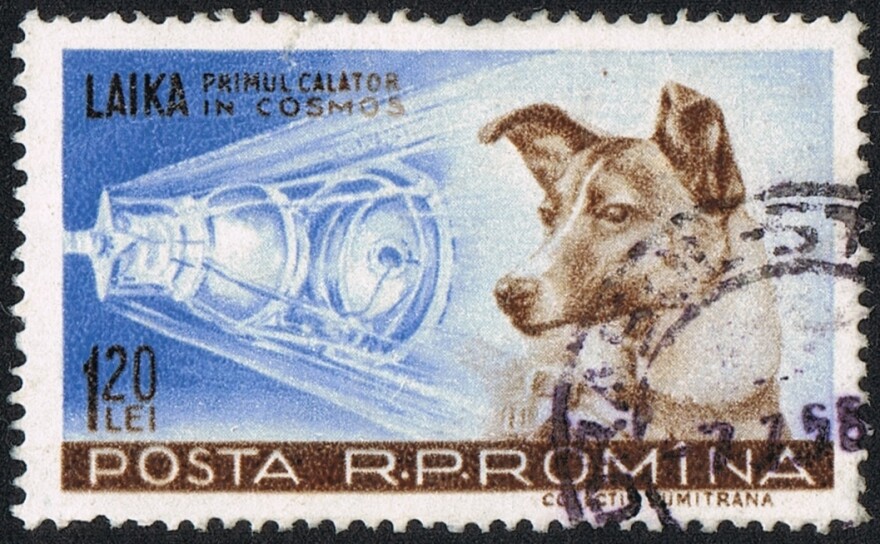In 1957, the Soviet Union sent a small dog into orbit around Earth. Laika became the first living creature to circle the planet. But for Laika it was a suicide mission. Space officials, under orders from Nikita Khrushchev to hurry to launch Sputnik II so it coincided with the 40th anniversary of the Bolshevik Revolution, had no plan to bring the small dog back.
Her legacy is explored in a deeply researched book by Tech Honors College professor Kurt Caswell, ‘Laika’s Window: The Legacy of a Soviet Space Dog.’ He sought to answer a central question he had about the 6.3-inch diameter window on the spacecraft.
“To me it was a natural question to ask, if there was a window in her capsule—could she see the Earth from space?,” he asks. “Was she actually the first living thing to see Earth from orbit? There’s something much more humane about her having the window and I think not just when she’s on the ground, but when she’s in space too. I think that has to do more with empathy for the animal that’s in this impossible situation. She doesn’t really know—like in the way that we understand it—what has happened to her.
But there’s another way in which she must, I think, have some understanding of this was big, something big has happened, and I’m very far from. That sort of intuitive experience—not obviously put into language for a dog, which would be silly. I think too that if she has access to see out the window, it allows the reader of the book, or the person imagining her story, to maybe join her inside the capsule and look out a little bit and wonder what it is that she saw and what it is that we are, who sent her there. At least it’s a two-way conversation, rather than a one-way conversation.”
The answer took some digging but Caswell eventually found it. A fairing, or covering added to reduce drag, over a thermoplastic window fell away.
Laika’s space mission was to have lasted a week.
“They didn’t know how to de-orbit a satellite at that time,” he says. “And they also didn’t know how to direct it to, they would have had to have a bunch of other equipment that they had developed and built to bring it into the atmosphere and slow it down and then direct it and all of that.
The Soviets knew that she, somewhere in that first 12 hours to 24 hours, they knew that she was dead, but they didn’t announce that to the world. They just kept announcing the success of the launch—which is true that the launch was successful. This was the first living thing to go into orbit and they did keep her alive and she made it alive into orbit. But she didn’t last the seven days,” he says.It wasn’t until 2002 that a Russian engineer at a conference in Houston admitted that Laika had not lived the entire five months Sputnick II orbited Earth.
A mutt, she was one of many dogs sent into space by the Soviets, who scoured the streets of Moscow looking for homeless dogs. Most were rocketed to the edge of the space and returned safely on parachutes.
Caswell says he struggled while writing the book on deciding what Laika was. Was she a lab animal?
“When I think of her as a working dog, there’s a much greater strength there,” he says. “So, I think if you’re reading this book, that that’s the story I’m trying to tell and also looking through this window, not just as what was going on with her, but how we behave and respond, and our interest, our thirst for knowledge. Also, there’s a competition here between the United States and Soviet Union, with power. It’s a comment on that too.”
Caswell’s book, ‘Laika’s Window: The Legacy of a Soviet Space Dog,’ can be purchased online at retail bookstores and at Barnes & Noble in South Plains Mall for $24.95.



